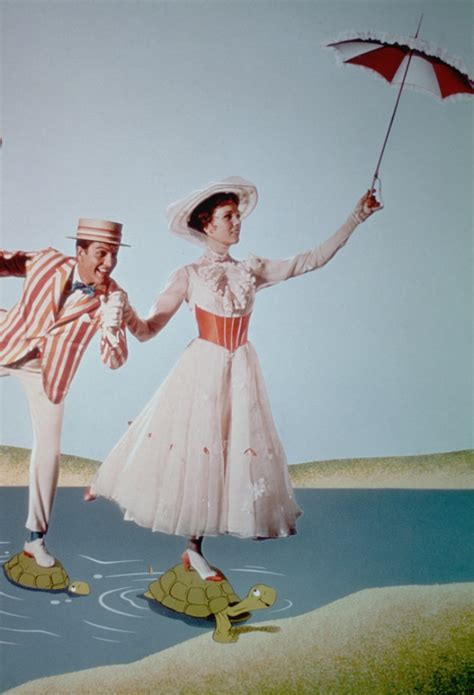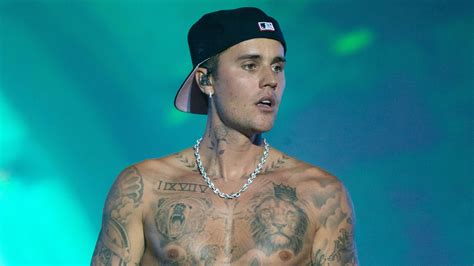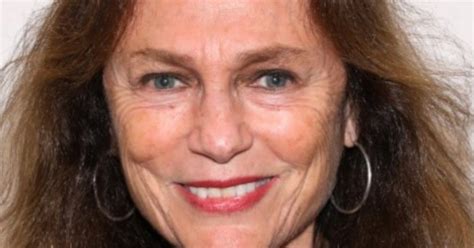
Behind the enchanting world of “Mary Poppins” (1964) lies a trove of captivating secrets, revealed decades after its initial release, including Julie Andrews’ surprising reluctance to take the role and the groundbreaking special effects that continue to astound audiences. From on-set challenges to innovative techniques, these revelations offer a fresh perspective on the making of a cinematic masterpiece.
Walt Disney’s “Mary Poppins,” a film celebrated for its magical realism and heartwarming narrative, was not without its share of behind-the-scenes drama and innovation. The film, which seamlessly blended live-action with animation and introduced revolutionary special effects, involved a complex production process that included extensive rehearsals, technological experimentation, and meticulous attention to detail. Several on-set challenges, casting decisions, and creative solutions have only recently come to light, providing a comprehensive look at the making of a cinematic triumph.
Julie Andrews’s Initial Hesitation
Despite ultimately delivering an iconic performance that earned her an Academy Award, Julie Andrews initially hesitated to accept the role of Mary Poppins. Fresh off her Broadway success in “Camelot,” Andrews faced a difficult decision when Walt Disney approached her. According to reports, Andrews was initially wary because Disney’s offer came at a time when she was hoping to secure the role of Eliza Doolittle in the film adaptation of “My Fair Lady.” Jack Warner, head of Warner Bros., ultimately cast Audrey Hepburn in the role, leading Andrews to accept Disney’s offer. “I thought I probably wouldn’t get it,” Andrews said, reflecting on her uncertainty about portraying the practically perfect nanny.
Dick Van Dyke’s Dual Role and Accent Controversy
Dick Van Dyke, known for his comedic timing, played not one but two roles in “Mary Poppins.” In addition to the chimney sweep Bert, Van Dyke also portrayed the elderly banker Mr. Dawes Sr., a feat achieved through extensive makeup and prosthetics. However, Van Dyke’s performance has been a subject of criticism over the years, particularly regarding his Cockney accent. While he received acclaim for his energetic portrayal of Bert, his accent has been widely regarded as one of the worst in film history. Van Dyke himself has acknowledged the criticism. Despite the accent controversy, Van Dyke maintained a positive outlook on his involvement in the film, noting the enjoyment he derived from working on such a groundbreaking project.
The Groundbreaking Special Effects
“Mary Poppins” was revolutionary for its seamless integration of live-action and animation, achieved through innovative special effects techniques. The film featured sequences where Mary Poppins and Bert interacted with animated characters in chalk drawings, a feat that required meticulous planning and execution. Disney’s team developed a sophisticated system that involved rotoscoping (tracing over live-action footage to create animation) and matte painting (creating realistic backgrounds on glass panels) to blend the two mediums seamlessly. These groundbreaking effects won the film an Academy Award for Best Visual Effects and set a new standard for cinematic innovation.
Walt Disney’s Persistent Pursuit of P.L. Travers
Walt Disney’s journey to secure the rights to “Mary Poppins” was a long and arduous one, spanning over two decades. P.L. Travers, the author of the “Mary Poppins” books, was notoriously protective of her creation and reluctant to relinquish control. Disney relentlessly pursued Travers, eventually convincing her to grant him the film rights, but only after she imposed strict conditions regarding the adaptation. The tense relationship between Disney and Travers during the film’s production was later dramatized in the film “Saving Mr. Banks,” which explored the creative clashes and personal dynamics that shaped the adaptation of Travers’s beloved books.
The Lengthy Production Schedule and Budget
“Mary Poppins” was a large-scale production that required a significant investment of time and resources. The film took several years to develop, from securing the rights to the books to completing the complex special effects. The budget for “Mary Poppins” was substantial for its time, reflecting the ambition and scope of the project. Disney spared no expense in bringing the magical world of Mary Poppins to life, utilizing state-of-the-art technology and assembling a talented cast and crew. The film’s financial success upon release justified the investment and solidified Disney’s reputation for producing high-quality, family-friendly entertainment.
The Sherman Brothers’ Musical Magic
The musical score for “Mary Poppins,” composed by the Sherman Brothers (Richard M. Sherman and Robert B. Sherman), is one of the film’s most enduring elements. The songwriting duo crafted a series of memorable tunes, including “A Spoonful of Sugar,” “Supercalifragilisticexpialidocious,” and “Chim Chim Cher-ee,” which became instant classics. The Sherman Brothers’ ability to blend catchy melodies with clever lyrics contributed significantly to the film’s success. They drew inspiration from various musical styles, including vaudeville, music hall, and traditional British folk music, to create a score that was both whimsical and timeless. The Sherman Brothers won two Academy Awards for their work on “Mary Poppins,” cementing their legacy as one of Disney’s most successful songwriting teams.
“Supercalifragilisticexpialidocious”: The Origin of an Iconic Word
The word “Supercalifragilisticexpialidocious” is perhaps the most famous element of “Mary Poppins.” The Sherman Brothers created the nonsensical word as a way to express something fantastic or wonderful. According to them, the word was inspired by childhood games and wordplay. They wanted to create a word that was both fun to say and memorable, and “Supercalifragilisticexpialidocious” certainly achieved that goal. The word has since entered popular culture and is often used to describe something extraordinary or unbelievable.
The Chalk Pavement Drawings
The chalk pavement drawings in “Mary Poppins” were a technical marvel of their time. The sequence where Mary Poppins, Bert, and the children jump into Bert’s chalk drawings required innovative animation and live-action techniques. Disney’s team used rotoscoping to animate the characters and matte paintings to create the backgrounds. The result was a seamless blend of live-action and animation that transported audiences into a magical world. The chalk pavement drawings sequence remains one of the most iconic and memorable moments in the film.
The Tea Party on the Ceiling
The tea party on the ceiling sequence in “Mary Poppins” was another example of the film’s groundbreaking special effects. To create the illusion of Mary Poppins and her guests floating on the ceiling, Disney’s team used a combination of wires, rotating sets, and camera tricks. The actors were suspended from wires and carefully choreographed to move in sync with the rotating set, creating the illusion that they were defying gravity. The tea party on the ceiling sequence was a visual spectacle that delighted audiences and showcased Disney’s mastery of special effects.
The Dancing Penguins
The dancing penguins in “Mary Poppins” were another beloved element of the film’s animated sequences. The penguins were animated using traditional cel animation techniques, with each frame hand-drawn and painted. The animators meticulously studied penguin movements to create realistic and humorous choreography. The dancing penguins sequence added a touch of whimsy and charm to the film and remains a favorite among audiences of all ages.
The Controversial Cockney Accent Revisited
Dick Van Dyke’s Cockney accent in “Mary Poppins” has been a subject of debate for decades. While Van Dyke has acknowledged the criticism and even joked about it, the accent remains a point of contention for many viewers. Some critics argue that the accent is an inaccurate and stereotypical portrayal of Cockney speech, while others appreciate Van Dyke’s energetic performance and comedic timing. Despite the controversy, Van Dyke’s portrayal of Bert remains one of the most memorable aspects of the film.
The Film’s Enduring Legacy and Influence
“Mary Poppins” has had a lasting impact on popular culture and continues to be celebrated as a cinematic masterpiece. The film’s themes of family, imagination, and the power of positivity resonate with audiences of all ages. “Mary Poppins” has inspired numerous adaptations, including a Broadway musical and a sequel film, “Mary Poppins Returns.” The film’s influence can also be seen in other works of popular culture, from television shows to commercials. “Mary Poppins” remains a beloved classic that continues to enchant and inspire audiences around the world.
The Rigorous Audition Process for the Children
The roles of Jane and Michael Banks were highly coveted, and the audition process was rigorous. Hundreds of child actors auditioned for the parts, and Disney personally oversaw the casting process. Karen Dotrice and Matthew Garber were eventually chosen for their natural chemistry and acting abilities. Dotrice and Garber brought a sense of authenticity and charm to their roles, making them integral to the film’s success.
The Inspiration Behind Mary Poppins’ Character
P.L. Travers drew inspiration for the character of Mary Poppins from various sources, including her great-aunt Helen Morehead, who was known for her stern demeanor and no-nonsense attitude. Travers also incorporated elements of mythology and folklore into the character, giving Mary Poppins a mysterious and enigmatic quality. The character of Mary Poppins is a complex and multifaceted figure who embodies both discipline and magic, making her a timeless and beloved literary icon.
The Deleted Scenes and Alternate Endings
Several scenes were cut from the final version of “Mary Poppins,” including a longer version of the “Jolly Holiday” sequence and a scene where Mary Poppins visits a wax museum. Alternate endings were also considered, but ultimately the filmmakers decided to stick with the original ending, which saw Mary Poppins flying off into the clouds. These deleted scenes and alternate endings offer a glimpse into the creative process behind the film and highlight the challenges of adapting a beloved book for the screen.
The Film’s Critical Reception and Awards
“Mary Poppins” was a critical and commercial success upon its release, receiving widespread acclaim for its performances, music, special effects, and overall quality. The film won five Academy Awards, including Best Actress for Julie Andrews, Best Visual Effects, Best Film Editing, Best Original Song (“Chim Chim Cher-ee”), and Best Original Score. “Mary Poppins” was also nominated for Best Picture, but lost to “My Fair Lady.” The film’s critical success solidified its status as a cinematic classic and cemented Disney’s reputation for producing high-quality, family-friendly entertainment.
The Broadway Adaptation of Mary Poppins
In 2004, a stage adaptation of “Mary Poppins” premiered in London’s West End, followed by a Broadway production in 2006. The musical featured new songs and scenes, as well as elements from the original books that were not included in the film. The stage adaptation was a critical and commercial success, running for several years in both London and New York. The success of the “Mary Poppins” musical demonstrates the enduring appeal of the story and its ability to resonate with audiences in different mediums.
The Sequel: Mary Poppins Returns
In 2018, Disney released “Mary Poppins Returns,” a sequel to the original film starring Emily Blunt as Mary Poppins. The sequel was set several decades after the original film and featured a new generation of Banks children. “Mary Poppins Returns” was a critical and commercial success, with many praising Blunt’s performance and the film’s nostalgic tone. The sequel proved that the magic of “Mary Poppins” could still captivate audiences after all these years.
The Costumes and Set Design
The costumes and set design in “Mary Poppins” were meticulously crafted to create a vibrant and believable world. The costumes were designed by Tony Walton, who created a range of outfits for Mary Poppins and the other characters that reflected their personalities and roles in the story. The set design was equally impressive, with elaborate sets that brought the world of Edwardian London to life. The attention to detail in the costumes and set design contributed significantly to the film’s overall visual appeal and helped to create a sense of magic and wonder.
The Restoration and Preservation of the Film
“Mary Poppins” has undergone several restorations over the years to preserve its visual and audio quality. The film has been digitally remastered and released on DVD and Blu-ray, allowing audiences to experience the film in the best possible quality. Disney has also taken steps to preserve the original film elements to ensure that “Mary Poppins” remains a timeless classic for generations to come.
Frequently Asked Questions (FAQ) about “Mary Poppins”
- Why was Julie Andrews hesitant to take the role of Mary Poppins?
Julie Andrews was hesitant because she hoped to be cast as Eliza Doolittle in the film adaptation of “My Fair Lady.” When she lost the role to Audrey Hepburn, she accepted Disney’s offer to play Mary Poppins. As Andrews stated, “I thought I probably wouldn’t get it.”
- What was Dick Van Dyke’s other role in “Mary Poppins,” and why is his performance controversial?
Besides playing Bert the chimney sweep, Dick Van Dyke also played the elderly banker Mr. Dawes Sr. His performance is controversial due to his widely criticized Cockney accent, often regarded as one of the worst in film history.
- What made the special effects in “Mary Poppins” so groundbreaking for its time?
“Mary Poppins” seamlessly integrated live-action and animation using techniques like rotoscoping and matte painting. This allowed characters to interact with animated chalk drawings, a feat that won the film an Academy Award for Best Visual Effects.
- How long did Walt Disney pursue P.L. Travers for the rights to “Mary Poppins”?
Walt Disney pursued P.L. Travers for over two decades to secure the rights to “Mary Poppins.” Travers was very protective of her creation and initially reluctant to relinquish control.
- What awards did “Mary Poppins” win at the Academy Awards?
“Mary Poppins” won five Academy Awards: Best Actress (Julie Andrews), Best Visual Effects, Best Film Editing, Best Original Song (“Chim Chim Cher-ee”), and Best Original Score.
Expanded Details on Key Aspects:
Julie Andrews’ Journey to Mary Poppins: From Broadway to Hollywood
Julie Andrews’ path to becoming Mary Poppins was not straightforward. Her Broadway success in “Camelot” had made her a star, but she faced a significant setback when she was passed over for the role of Eliza Doolittle in the film adaptation of “My Fair Lady.” This disappointment, however, opened the door for her to collaborate with Walt Disney. Disney had been impressed by Andrews’ stage presence and vocal abilities, and he believed she was perfect for the role of Mary Poppins.
Andrews’ initial hesitation stemmed from her uncertainty about playing a character so different from her previous roles. She was also concerned about the potential impact of the film on her career. However, after meeting with Disney and learning more about his vision for the project, Andrews decided to accept the role. Her decision proved to be a wise one, as her performance as Mary Poppins catapulted her to international stardom and earned her an Academy Award for Best Actress.
The Cockney Accent Controversy: Dick Van Dyke’s Perspective
Dick Van Dyke’s Cockney accent in “Mary Poppins” has been a subject of scrutiny for decades. While Van Dyke has acknowledged the criticism, he has also defended his performance, arguing that he was simply trying to create a memorable and entertaining character.
Van Dyke’s accent coach was Irish, which some attribute to the accent’s shortcomings. Van Dyke has often joked about the accent, admitting that it was not his best work. However, he has also emphasized the positive aspects of his experience working on “Mary Poppins,” noting the camaraderie among the cast and crew and the innovative nature of the film.
The accent controversy has not diminished Van Dyke’s legacy as a performer. He remains a beloved figure in entertainment, and his contributions to “Mary Poppins” continue to be celebrated.
The Special Effects Revolution: Blending Live-Action and Animation
“Mary Poppins” was a pioneer in the use of special effects, seamlessly blending live-action and animation in a way that had never been done before. The film’s special effects team, led by Peter Ellenshaw and Eustace Lycett, developed a range of innovative techniques to bring the magical world of Mary Poppins to life.
One of the most notable special effects achievements in “Mary Poppins” was the creation of the chalk pavement drawings sequence. This sequence required a combination of rotoscoping, matte painting, and optical printing to seamlessly integrate the live-action characters with the animated backgrounds. The result was a visually stunning and immersive experience that transported audiences into a world of fantasy.
Another groundbreaking special effect in “Mary Poppins” was the tea party on the ceiling sequence. To create the illusion of Mary Poppins and her guests floating on the ceiling, the special effects team used a rotating set, wires, and camera tricks. The actors were suspended from wires and carefully choreographed to move in sync with the rotating set, creating the illusion that they were defying gravity.
Walt Disney’s Obsession: Securing the Rights to Mary Poppins
Walt Disney’s pursuit of the rights to “Mary Poppins” was a testament to his determination and vision. He first encountered the “Mary Poppins” books in the 1940s and was immediately captivated by the character and her magical world. However, P.L. Travers was reluctant to sell him the rights, fearing that Disney would distort her creation.
Disney persisted for over two decades, eventually convincing Travers to grant him the film rights. However, Travers imposed strict conditions on the adaptation, including the right to approve the screenplay and the music. The tense relationship between Disney and Travers during the film’s production was later dramatized in the film “Saving Mr. Banks,” which explored the creative clashes and personal dynamics that shaped the adaptation of Travers’s beloved books.
The Sherman Brothers’ Musical Legacy: Creating Timeless Songs
The Sherman Brothers’ musical score for “Mary Poppins” is one of the film’s most enduring legacies. The songwriting duo crafted a series of memorable tunes that have become classics, including “A Spoonful of Sugar,” “Supercalifragilisticexpialidocious,” and “Chim Chim Cher-ee.”
The Sherman Brothers drew inspiration from a variety of sources, including vaudeville, music hall, and traditional British folk music, to create a score that was both whimsical and timeless. Their ability to blend catchy melodies with clever lyrics contributed significantly to the film’s success.
The Sherman Brothers won two Academy Awards for their work on “Mary Poppins,” cementing their legacy as one of Disney’s most successful songwriting teams. Their songs continue to be performed and enjoyed by audiences of all ages, ensuring that the musical magic of “Mary Poppins” will endure for generations to come.
The Lasting Impact of Mary Poppins: A Cultural Phenomenon
“Mary Poppins” has had a profound impact on popular culture, inspiring countless adaptations, parodies, and homages. The film’s themes of family, imagination, and the power of positivity resonate with audiences of all ages.
“Mary Poppins” has been adapted into a Broadway musical, which has been performed around the world. The musical features new songs and scenes, as well as elements from the original books that were not included in the film.
In 2018, Disney released “Mary Poppins Returns,” a sequel to the original film starring Emily Blunt as Mary Poppins. The sequel was set several decades after the original film and featured a new generation of Banks children.
“Mary Poppins” remains a beloved classic that continues to enchant and inspire audiences around the world. Its enduring appeal is a testament to the film’s timeless themes, memorable characters, and groundbreaking special effects.









